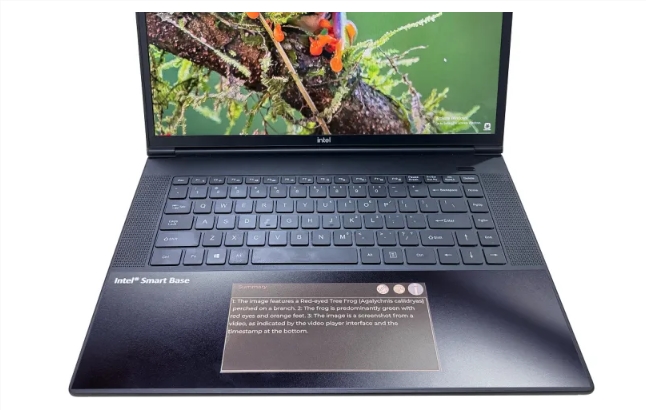E Ink recently announced that they have developed a new touchpad for laptops, which uses the same electronic paper technology as e-readers. This innovative product is not simply about increasing the touchpad size or adding secondary display features, but rather positioning it as a dedicated platform for AI applications and assistants, designed to run alongside mainstream operating systems.
E Ink released a prototype image showing the upgraded touchpad, which features a color e-ink screen, similar to the technology used in devices like the Amazon Kindle Colorscreen. E Ink's vision is that this screen will serve as an independent area, allowing AI-generated text summaries to appear directly under the user's hands while working on documents; or enabling users to have continuous conversations with AI chatbots without switching desktop windows.

One of the biggest advantages of this new technology lies in its power consumption characteristics. E Ink's display technology only consumes power when updating content, which stands in stark contrast to traditional LCD or OLED screens that consume power continuously. Considering the higher demands that current AI tools place on laptop battery life, the low-power e-paper technology is undoubtedly a significant advantage.
Although companies like Asus have already released laptop touchpads with secondary displays, these products typically use smartphone-sized LCD screens, which are often too small to effectively run applications designed for larger screens. Moreover, full-color LCD screens located under the user's palm can be distracting and may significantly reduce the laptop's battery life. In contrast, e-ink screens, although currently best suited for displaying text, have expanded their application areas to include color signs and digital notebooks, demonstrating stronger adaptability.
E Ink also stated that, similar to Apple's discontinued Touch Bar, the touchpad display can provide quick access to common shortcuts, show notifications or weather information, or offer temporary playback controls, without sacrificing a row of function keys on the laptop keyboard.
At present, more technical details about this new touchpad remain unclear. In addition to possibly using a color e-paper display, E Ink has not yet revealed whether it will use its existing panels or develop a new panel with higher resolution. The company specifically mentioned compatibility with AI PCs based on Intel chips in its announcement, but did not clarify whether the touchpad display is driven by the laptop's main operating system or if it will use its own operating system. Additionally, E Ink has not provided information on when these touchpads will be applied to laptops or which hardware manufacturers may be interested in them.









